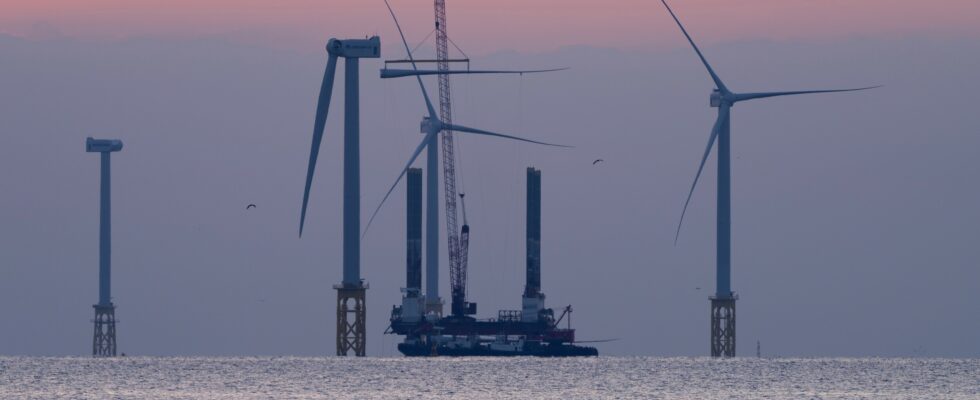The United States may have big ambitions for wind energy, but a century-old law requiring the use of American ships is hampering their offshore projects. And France suffers a bit from the same problem.
The Biden administration has set the goal of generating no less than 30 gigawatts of electricity from offshore wind power by 2030. This is the equivalent of the consumption of a city like New York, multiplied by four. But a law dating from 1920, no, you are not dreaming, requires the use of American ships specialized in installing wind turbines. Except that across the Atlantic, as in France, these ships are not legion.
Bureaucratic inconsistency in all its splendor, and it’s the wind turbine that is toast
The first American offshore wind project, Vineyard Wind 1, faces serious obstacles. The turbine blades of the latter left their port in September 2023, heading to Massachusetts. Except that the blades traveled aboard barges, instead of a wind turbine installation ship, which had become essential to the installation process.
In the United States, this is due to the Jones Act, or Merchant Marine Act of 1920, which requires anyone who wants to transport goods across the United States by sea to use American ships. More precisely, this obligation concerns the places reached by the ship. And in the USA, we consider an offshore wind turbine as a place in its own right, which makes it subject to the Jones Act.
Except that this rather archaic interpretation of the text creates major obstacles and challenges for the American wind industry. Because at the time of writing, Uncle Sam’s country does not have a single offshore wind turbine installation vessel in operation. He then had to make do with barges, since it was impossible for him to mobilize foreign ships.
The first American wind turbine installer ship under construction
The picture is gloomy, but there is hope emerging, no pun intended. The first ship of this nature, compliant with the Jones Act and named the “Charybdis” (the daughter of Gaia and Poseidon in Greek mythology), is today under construction in Texas. Except that delays attributed to a lack of manpower are pushing back its completion again and again, at best scheduled for 2025. As it stands, the shortage of ships is gradually pushing the United States out of its 30 gigawatt target. of wind electricity by 2030.
The interpretation of the Jones Act gives the country a particularly costly monopoly, requiring that construction, flagging, and shipping be done by American shipyards. Inevitably, this impacts the cost and timing of offshore wind projects, limiting competitiveness and slowing the United States’ progress toward its greener energy goals.
Experts stress that the US must resolve the problems linked to the Jones Act if it wants to accelerate the deployment of offshore wind energy. Although other factors, such as interest rates and inflation, play into the sector, reforming this century-old law is crucial to ensuring meaningful wind development.
Source : Hakai Magazine

5